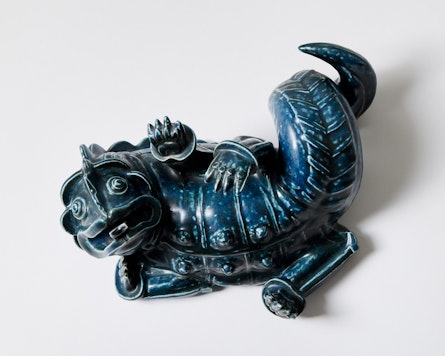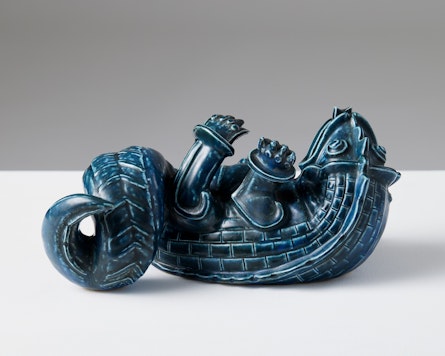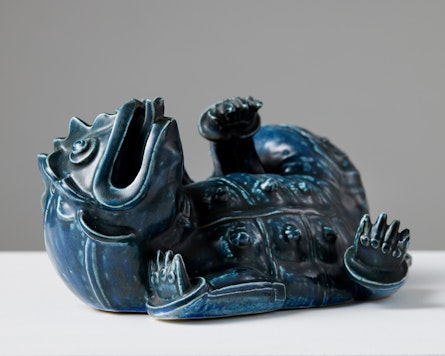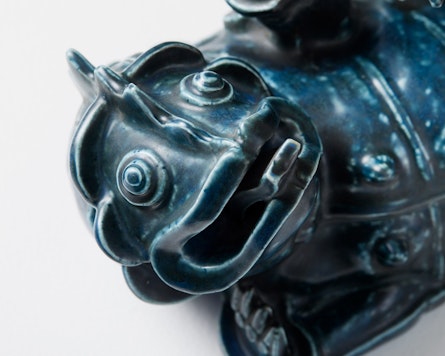Dragon sculptureDesigned by Wilhelm Kåge for GustavsbergSweden, 1939
Reference number: 8581 / 11439
Tear sheet: Download
Material:
Stoneware.
Measurements:
H: 11 cm / 4 5/16"
L: 24 cm / 9 7/16"
W: 19 cm / 7 1/2"
L: 24 cm / 9 7/16"
W: 19 cm / 7 1/2"
On display at our London gallery
Description:
Wilhelm Kåge's dragon sculptures, crafted at Gustavsberg during the late 1930s to 1950s, exemplify his innovative approach to ceramic art. The sculpture showcase a blend of whimsical design and Kåge’s craftmanship. Kåge's dragon sculptures are characterized by their stylized forms, featuring exaggerated features such as pronounced eyes, curled tails, and textured bodies all seen in this piece.
Dragons offered Kåge a departure from the functionalist ideals that had dominated much of his earlier career. These creatures provided a canvas for sculptural and expressive freedom and blending Kåge’s humour and fantasy. The dragons, often affectionately referred to as drakvalpar (dragon puppies), possess a charm and personality that contrast with the restrained aesthetics of his tableware.





